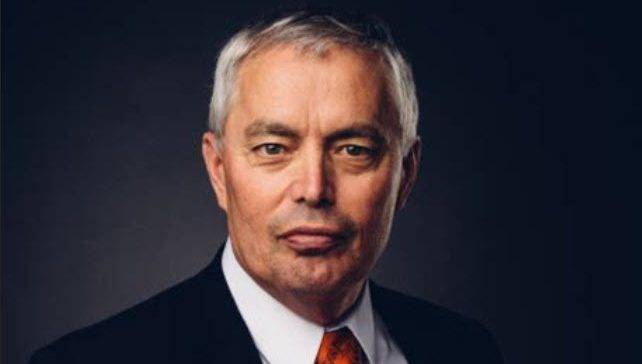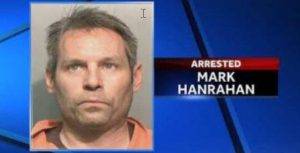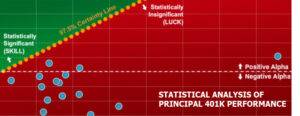
You’re parked in a drugstore parking lot waiting for your wife to pick up a few groceries. Suddenly, a guy appears at your open window, pointing a pistol at you, and tells you to get inside his truck. Fearing for your life, you obliged and was placed in the passenger seat next to your kidnapper. For the next three hours, he demands you help him find cocaine or crack cocaine, or he will drive you to a nearby community and kill you. Fortunately, you speak Spanish and he doesn’t. You start making calls to keep the kidnapper happy while actually calling friends to have the police rescue you at a nearby Walgreen’s. The armed kidnapper is arrested, and the next morning pays a $100,000 cash bail bond and is released. A few days later, your armed kidnapper, originally charged with second-degree kidnapping, filed a written plea of guilty to carrying weapons while intoxicated and solicitation to commit a felony. The Judge delivered a deferred judgment sentence, two years of probation on both counts and a $1,375 civil penalty. He is also issued a two-year no-contact order protecting you, the victim.
In the Spring of 2015, Mark Hanrahan committed such a crime in Des Moines, Iowa. He paid his $1,375 civil penalty and walked out of the courthouse a free man. Only Hanrahan was different… as an Executive Director with Principal Financial Services, he was responsible for $10 billion dollars of commercial real estate purchases, representing the savings of millions of 401k investors.
About the Principal Financial Group of Companies…
Larry Zimpleman, pictured above, served as President of Retirement and Investor Services for Principal Financial Group, Inc. from December 3, 2003 to June 2006. He served as President and Chief Operating Officer since June 1, 2006, and as the Chief Executive Officer from May 1, 2008 to August 2015, when he retired. During his tenure as President and CEO, Zimpleman was considered a national icon for 401k retirement planning. He grew the company into an international provider for pension and retirement plans, including doing business in China and Mexico.
HSBC Bank was Principal’s closest ally, and in 2011, Principal purchased the HSBC AFORE Mexican pension program. In a Principal press release dated April 11, 2011, Principal announces a new joint venture with HSBC:
“The Principal Financial Group(R), Inc. (NYSE: PFG) announced that Principal Financial Group, S.A. de C.V., Grupo Financiero has agreed to acquire 100% of HSBC AFORE, S.A. de C.V. (HAFO) from Grupo Financiero HSBC, S.A. de C.V. for approximately US $198 million based on current exchange rates (Mexican Pesos 2,360 million). In addition, The Principal(R) and HSBC Bank have agreed to establish an exclusive distribution arrangement, subject to regulatory approval, for the distribution of Principal AFORE’s products through HSBC’s extensive network of more than 1,100 branches. HSBC has one of the largest banking networks in Mexico. The AFORE transaction is expected to be immediately accretive to EPS and ROE, and is expected to close by early third quarter 2011, subject to regulatory approval.
According to Larry D. Zimpleman, chairman, president and CEO of The Principal, “In our February 2011 earnings call, we said we were evaluating various alternatives for our approximately $700 million of deployable capital. Certainly these include acquisitions that are aligned with our focused strategies, are complementary to our existing businesses, and are fairly priced. This opportunity in Mexico clearly fits our criteria.”
Upon approval, HSBC AFORE will merge with the Mexican pension fund business of The Principal, making Principal AFORE one of the fastest growing pension providers in Mexico. The acquisition will increase Principal AFORE’s pension assets by $2.9 billion or 62 percent and add 1.6 million customers. The combined AFORE will become the country’s sixth largest in assets under management with more than seven percent market share and fourth largest by customers with nearly 11 percent market share.”
A few months later, Reuters reported that HSBC was to pay a record $1.9 billion U.S. fine in a money laundering scheme….“HSBC Holdings Plc agreed to pay a record $1.92 billion in fines to U.S. authorities for allowing itself to be used to launder a river of drug money flowing out of Mexico and other banking lapses.”
Conflicted Legal Opinions…
Principal has learned to circumvent the law by using the law to offer conflicted opinions. In 2011, for example, the Department of Labor (DOL) granted an exemption for Principal to violate prohibited transaction restrictions of the Employee Retirement Income Security Act of 1974 (ERISA or the Act) and/or the Internal Revenue Code of 1986 (the Code). The so called “exemption” came with a fee for such a “service,” and allowed Principal to market their own and affiliated proprietary products to retirement plans for which they provided services. The exemptions were conditional upon upon Principal being a “Fiduciary.”
Plan Sponsor published an article in March, 2012, describing the exemption for Principal Life Insurance Company to be permitted to “invest client plan assets into proprietary mutual funds through target-date funds or other insurance company pooled separate accounts”… this activity was expressly prohibited under ERISA. The exemption clarified that the relief is available regardless of whether Principal is acting as a discretionary or non-discretionary Fiduciary, and the exemption would permit (subject to disclosure) the use of Principal broker/dealer affiliates to execute trades for the proprietary mutual funds. In other words, the DOL issued a license (for a fee) for Principal to steal retirement earnings from unwary investors. The Federal Register published their exemption and this link can be accessed for details.
Of course, Principal had been violating this “strictly enforced” law for several years, and had successfully defrauded their 401k clients, and the IRS, out of approximately 4 billion dollars during that time. The exemption simply made it legal, and could have involved collusion with the DOL as well. Later, the 401(k) Advisor published a law update written by Marcia Wagner (Wagner Law group) in which she reviewed the fiduciary status of Plan Providers in general. It was the DOL’s position that Principal “exercised discretionary control over plan management, which is the test for fiduciary status under the first prong of the functional fiduciary definition.” Ironically, later the Eighth Circuit Court of Appeals rejected these claims of fiduciary status, because in their view “Principal owed no duty to plan participants“.
Principal was also instrumental in obtaining the DOL’s approval for the use of “Profiles” in place of a prospectus when marketing their insurance products. The Broker/Dealer selling commissioned products through Principal could no longer rely on the accuracy of information provided to their client(s), because the fictious “Profile” is not required to meet any standard of compliance concerning accuracy. Principal could now sell converted assets as non-publicly traded proprietary products Principal owns without the fiduciary obligation a Registered Financial Advisor would have under the Conflict of Interest standard.
Crime & Corruption in Your 401k…
In a book soon to be published, called Crime & Corruption in Your 401k, the author describes methods used by financial institutions to steal 401k deposits received from plan sponsors. In one example, a large insurance company apparently converted hundreds of millions of dollars in retirement deposits from millions of investors by obtaining worthless shares of stock from a Canadian investment company. An estimated $500 million dollars was procured from 401k plans in the U.S. by wrapping the shares in privately held proprietary mutual funds created by an affiliate, then sold at inflated prices to investors. The stock shares were later “repatriated” to the Canadian firm for cancellation. The Canadian government did not require registration of shares sold in a private sale to foreign investors at that time, nor were the shares registered with the SEC.
 Most money laundering involve 401k service providers like Principal, and often include joint venture partnerships as describe above to perpetrate the crime. Principal Financial is one of the largest providers of small to medium sized 401k plans in the United States. This targeted group of investors represent the largest number of plan sponsors, and are the least educated. The typical small to medium plan sponsor is looking for direction and help in deciding the investments that will best serve their employees. The “Big Box” element found in Principal’s offerings fit that protocol well. Sadly, when the plan sponsor assigns his fiduciary responsibilities to a non-fiduciary committed to not serve in the plan sponsor’s best interest, bad things will happen.
Most money laundering involve 401k service providers like Principal, and often include joint venture partnerships as describe above to perpetrate the crime. Principal Financial is one of the largest providers of small to medium sized 401k plans in the United States. This targeted group of investors represent the largest number of plan sponsors, and are the least educated. The typical small to medium plan sponsor is looking for direction and help in deciding the investments that will best serve their employees. The “Big Box” element found in Principal’s offerings fit that protocol well. Sadly, when the plan sponsor assigns his fiduciary responsibilities to a non-fiduciary committed to not serve in the plan sponsor’s best interest, bad things will happen.
On September 26, 2008, midnight, Central Standard Time, with no notice to investors as required by the Department of Labor, Principal declared a “withdrawal restriction” on the Principal U.S. Property Separate Account, effectively freezing out hundreds of thousands of investors from withdrawing or transferring their retirement savings to another investment. During the months that ensued, the fund lost much of it’s previous value, plummeting from over $6 billion in commercial property assets, down to $3.5 billion. The reported losses were not actually incurred by Principal, but were “unrealized losses.” In other words, Principal management subjectively projected these losses, reflected on the balance sheet as artificially incurred by the investors while the fund was frozen. The PUSPSA account did not incur any losses for Principal, as thousands of plan assets, with billions of dollars in value, were never reported to the DOL, and their balances were never included in the account itself. As far as the 401k investors were concerned (and the IRS), the deposits never happened.
Zimpleman had a good reason to freeze the account. Since 2006, when he took control of the company, he and his cronies had been systematically converting funds from the account for other corporate, and perhaps, personal endeavors. Principal’s protocol for reporting owned commercial properties was changed. Each individual property became a private “Limited Liability Corporation,” registered in the State of Delaware, where the system is “corporate friendly.” with this new system, retained earnings, debt, and equity could be be reported “off balance sheet,” where it fails to appear in the official accounting record. Beginning in 2006, payments paid to various counties in select states for commercial property taxes were typically overpaid, generating a refund check back to the managing member, which was Principal for the U.S. Property Separate Account. These property tax refund checks totaling several millions of dollars a year most likely ended up in the Principal Life General Fund, or worse, in some Executive Director’s pocket.
At the same time, other commercial property taxes went unpaid, generating late payment penalties for the account. As the cash liquidity began to disappear from the account due to fraud, Principal began defaulting on loans secured on owned plan assets, allowing commercial buildings valued at hundreds of millions of dollars to go to a short sale, causing a disaster for investors. Often Principal would “sell” troubled assets owned by developers Principal had partnered with, where loans made by Principal as an equity partner were either defaulted, or soon to default. Principal would purchase these investments for the U.S. Property Separate Account and include the mortgage assumption to be paid by the account.
In order to borrow funds from closely associated lending institutions like Wells Fargo and Bank of America, Principal would use the USPSA as collateral for their joint venture loans. Once the funds were secured by Principal, the loan would later go to default, and the account would be forced to pay off the bank and take ownership of the property, often worthless land that was overpriced and not fit for development. Meanwhile, the loan proceeds would disappear. In one Florida purchase for the account, a storage facility was purchased for the account, including a loan assumption in which Principal was the lender. Failing to make loan payments to themselves on behalf of the account, and later wrapping the property in a commercial mortgage backed security, Principal gave the CMBS trustee permission to foreclose on the loan. Not only did the investors lose, but also thousands of CMBS investors. Clearly a case of securities fraud, that will never be prosecuted.
With now President Trump, once again, in control, there may be hope for a solution for combating abuse in our retirement program, starting with a good housekeeping in our labor department. This would be provisional upon having a U.S. Department of Justice willing to prosecute offenders like the Principal Group of Companies. Zimpleman had a close relationship with the Obama administration during the time he was stealing from investors, to the extent that his son Thomas Zimpleman was a legal advisor attached to the DOJ, and represented Hillary Clinton in civil cases related to her position as Secretary of State.

